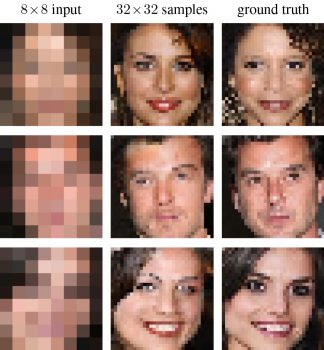
Google’s AI can “zoom and enhance” photos like crime films
You ever watch one of those cool crime or detective flicks and the prosecutor comes across some footage they need a good look at? One of the most common tools for these fantasy heroes is a magical enhance feature that takes a very pixelated photo and somehow manages to produce a crystal clear image out of it. The results they get are typically overexaggerated and borderline technologically impossible.
Well, Google’s AI might soon be able to do much of the same… sort of. The company’s latest neural network project can take a pixelated photo and make an approximation of what’s in the image.
Left: Pixelated original. Middle: AI output. Right: Actual photo.
This technique actually involves 2 different neural networks. The first one takes the source image and compares it to a collection of high-quality photos which were downsized to its resolution. Once it’s finished, a second network will then try to add new pixels to the photo based on the results of the first process.
It works its magic by learning which details are likely to be where, such as whether that red blob toward the bottom is a pair of painted lips. You can read more details about the process at Cornell University’s page for PixelCNN, as this is an implementation of that algorithm.
The end result? A photo depicting a human, or a bedroom, or whatever it is the AI thinks it is. It’s not a very accurate one, obviously, and it isn’t exactly a real photo of an actual person or room, but it does a well enough job of producing a result which can be used to help identify whoever it is you’re actually seeking.
The implications of such a technology are huge. In the area of law enforcement, It won’t be able to hold its own as a way to provide actionable evidence for prosecutors — forensic, it is not — but it can prove to be a valuable starting point for situations where a pixelated image is all you have to go on.
[via ArsTechnica]


